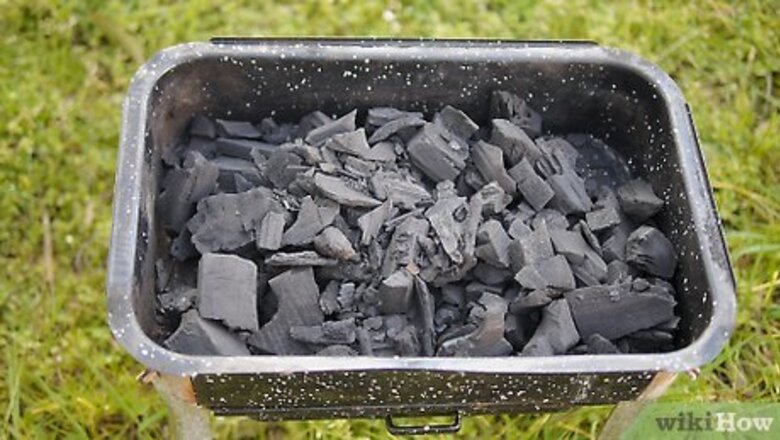
views
Grilling a Simple Meal
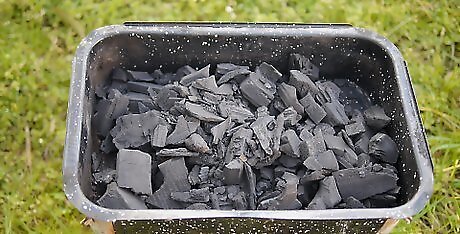
Use a charcoal grill for a natural smoky flavor. A charcoal grill requires coals to be lit in order to begin grilling, which can be done using a fire starter and a long match. Wait for the charcoal to heat up for about 20 minutes before starting to cook. When you're done with the charcoal grill, close the lid and let the coals cool down naturally before emptying the ashes. Charcoal grills get hotter and impart a more natural flavor, but they're more difficult to clean and keep at a constant temperature.
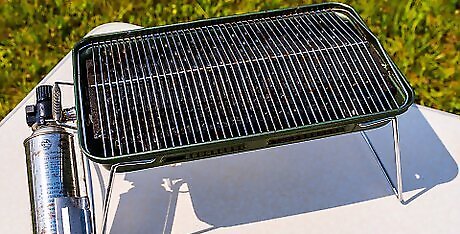
Opt for a gas grill for an easy-to-use, convenient option. A gas grill often uses a propane tank that will need to be properly attached before starting to cook—you can do this by connecting the grill's gas line to the propane tank nozzle. The gas grill has controls that you can easily turn on and off to light the grill, as well as control the temperature and placement of the fire. Gas grills tend to be more expensive but are easier to work and don't take as long to heat up. Make sure the gas is turned to the off position before hooking the propane tank up to the grill.
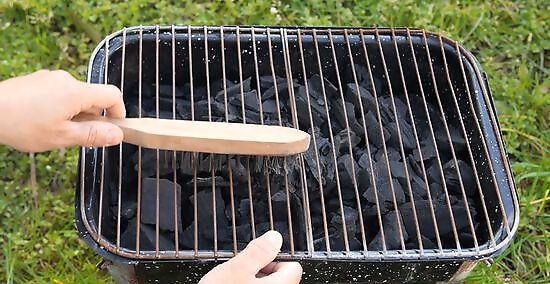
Keep your grill clean and maintained. Clean your grill lightly before each use and then heavily clean it about once or twice a year. Use a wire-bristle brush to clean food and debris from the tops and bottoms of grates or rods, scraping the brush back and forth against the grate to give it a good cleaning. If you're using a charcoal grill, empty the ashes from your previous grilling session, if necessary. You can heavily clean your grill by heating up the grill for 15 minutes to loosen any food particles, turning the gas off, and then using a wire-bristle brush dipped in soapy water to scrub the grate clean.
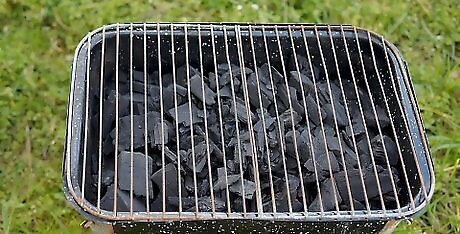
Use direct heat for faster-cooking foods. If you're cooking something like burgers or hot dogs, it's best to cook them over direct heat since they cook faster. The section of your grill with direct heat will be the hottest. A gas grill will have settings, such as Low, Medium, and High, that you can easily adjust to get the right heat level. Your charcoal grill will just be set up normally with lit coals underneath.
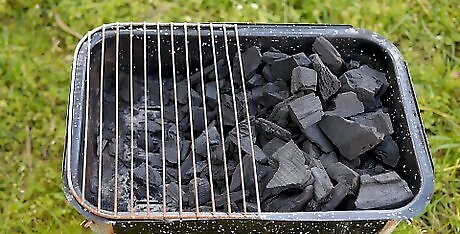
Use indirect heat for slow-cooking meats. Foods such as ribs are often cooked over indirect heat for the slow and steady smoky flavor. Set the indirect heat section to low heat on a gas grill, or place your food on the side without coals underneath on a charcoal grill. For charcoal grills, keep your coals or briquettes on one side of your grill—the direct heat side—and keep the other side (the indirect heat side)—free of coals. Close the lid for slower-cooking foods to keep the heat in.
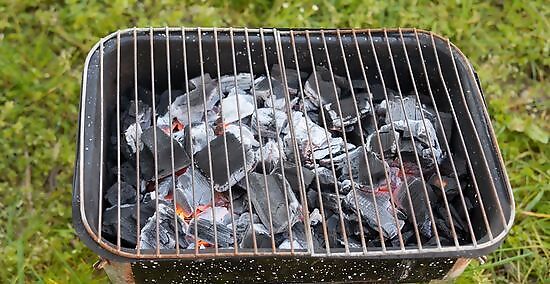
Preheat your grill 10-20 minutes before cooking. To preheat your grill, you'll either light your charcoal grill with a chimney starter or turn on the gas to the gas grill. Let your grill heat up for 20 minutes to ensure it's ready to start cooking. A gas grill only takes about 10 minutes to warm up while a charcoal grill will take 20. To preheat a gas grill, just turn the dial to your desired heat setting. To preheat a charcoal grill, light the coals using a flame and flammable material (such as newspaper or lighter fluid).
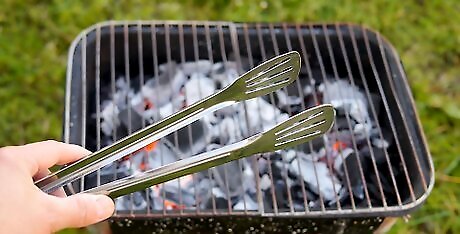
Use quality grilling tools throughout the BBQ process. When you go to place your meats or veggies on the grill, use a pair of tongs or a spatula, as these are likely your most useful tools. It's also a good idea to have grilling mitts and aluminum pans that you can use as well. Make sure you're not handling cooked foods with a tool that has uncooked meat residue on it. Try to flip your food only once or twice to keep in the juices.
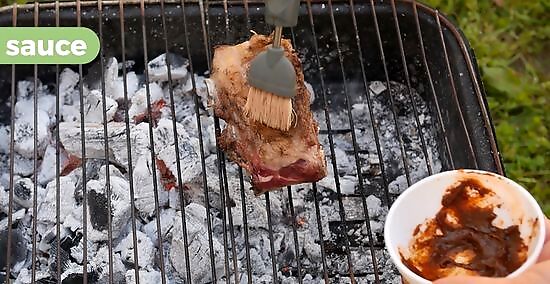
Save basting for the last 2-5 minutes of cooking. If you're putting a sauce or other liquid over your meat, it's best to wait until it's almost done cooking to avoid burning the additional flavor. Use a baster or brush to apply the sauce a few minutes before taking the food off of the grill.
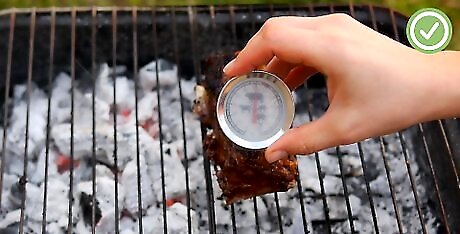
Test for meat doneness using a thermometer. Stick the thermometer into the thickest part of the meat, keeping it away from the bone. You can use either a dial or digital thermometer, just make sure to wait long enough for the thermometer to get an accurate reading. The internal temperature of poultry should be 165 °F (74 °C) while pork and fish should be 145 °F (63 °C). Beef ranges from 140 °F (60 °C) which is rare, to 170 °F (77 °C) which is well done. Make sure you're using a thermometer that's made for meat and poultry.
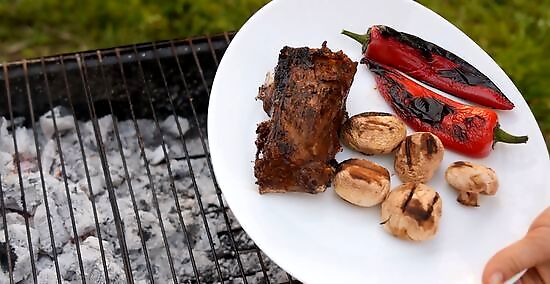
Remove the meat from the grill once it reaches its ideal temperature. Your meat will continue to cook for roughly 10 more minutes after you remove it from the grill. If your food is close to done, take it off of the grill and let it sit for a few minutes before cutting into it so that it can continue cooking. While your meat will continue to cook a bit after it's removed, don't take it off the grill if it's still undercooked.
Choosing Different Foods
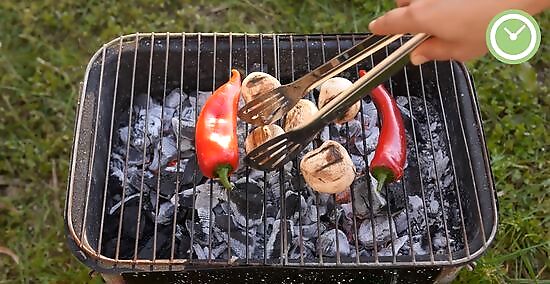
Learn how to grill vegetables and fruits for great sides. Lay the veggies and fruits either directly on the grill or wrapped in foil on the grate. Fruits and vegetables have different densities and cooking times, but most should only take about 5-10 minutes on the grill. Grilled veggies make an excellent side to a meal, and barbecued fruits, like pineapples or bananas, make a good dessert. Denser vegetables such as potatoes benefit from being boiled before you grill them. Place the veggies and/or fruits on a kebab to easily grill them.
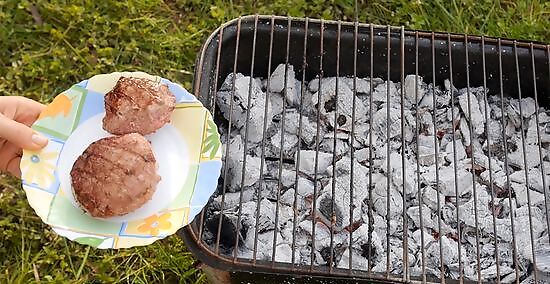
Try grilling filet mignon for a tender piece of meat. Most people choose thick cuts for filet mignon, and it's best to cook them over direct heat. Use your meat thermometer to test for doneness, with the cooking time depending largely on the size and thickness of the meat. For medium-rare, aim for a temperature of 145 °F (63 °C), while an internal temperature of 160 °F (71 °C) is medium.
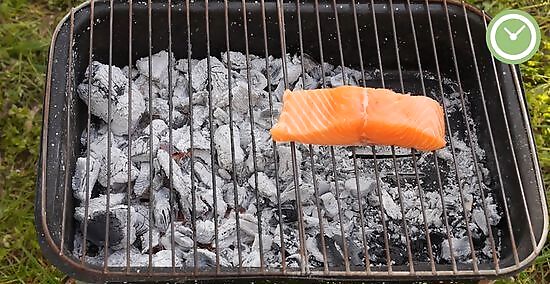
Put salmon on the grill for a tasty fish. It's best if you choose salmon with skin, putting the salmon skinless-side down on the grill first. Cook it until it's a little over halfway cooked before flipping it over to finish grilling. It's recommended that you cook your salmon to about 125 °F (52 °C) and then let it sit and cook off of the grill a while longer. Add lemon to your salmon once it's finished for flavor.
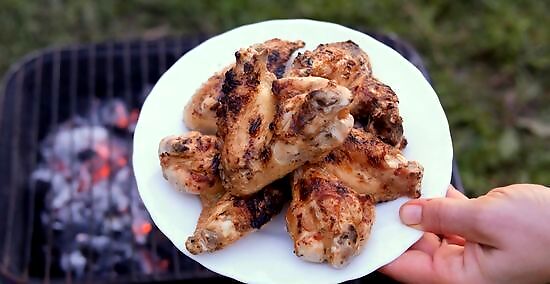
Grill chicken wings for a yummy finger food. You can put the wings in a marinade before cooking them, giving them even more flavor. Grill your chicken wings over medium heat, flipping them over once they look charred on one side. The grilling process should take about 20 minutes. Chicken wings should have an internal temperature of 165 °F (74 °C)—just make sure the thermometer isn't touching the bone if you go to take the temperature. Opt for pieces of skinless chicken as a healthier alternative.
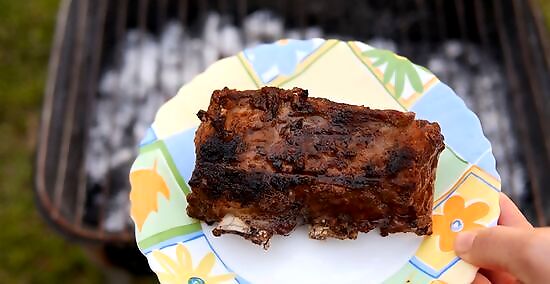
Make barbecue ribs for a classic meal. A simple rub makes ribs even better, and they cook well when slow-cooked over indirect heat. If grilling them slowly, it can take about 5-6 hours. Check for an internal temperature of at least 145 °F (63 °C). The size and thickness of your ribs will determine how long it takes them to cook.













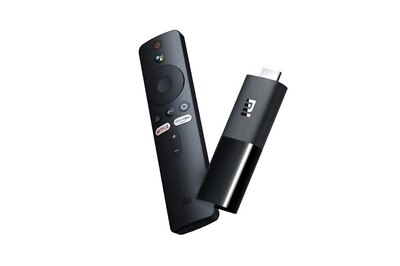


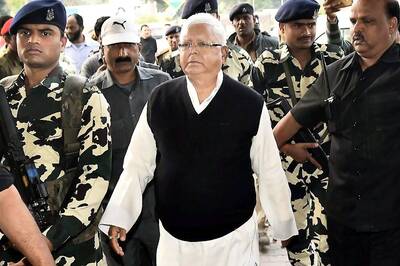
Comments
0 comment